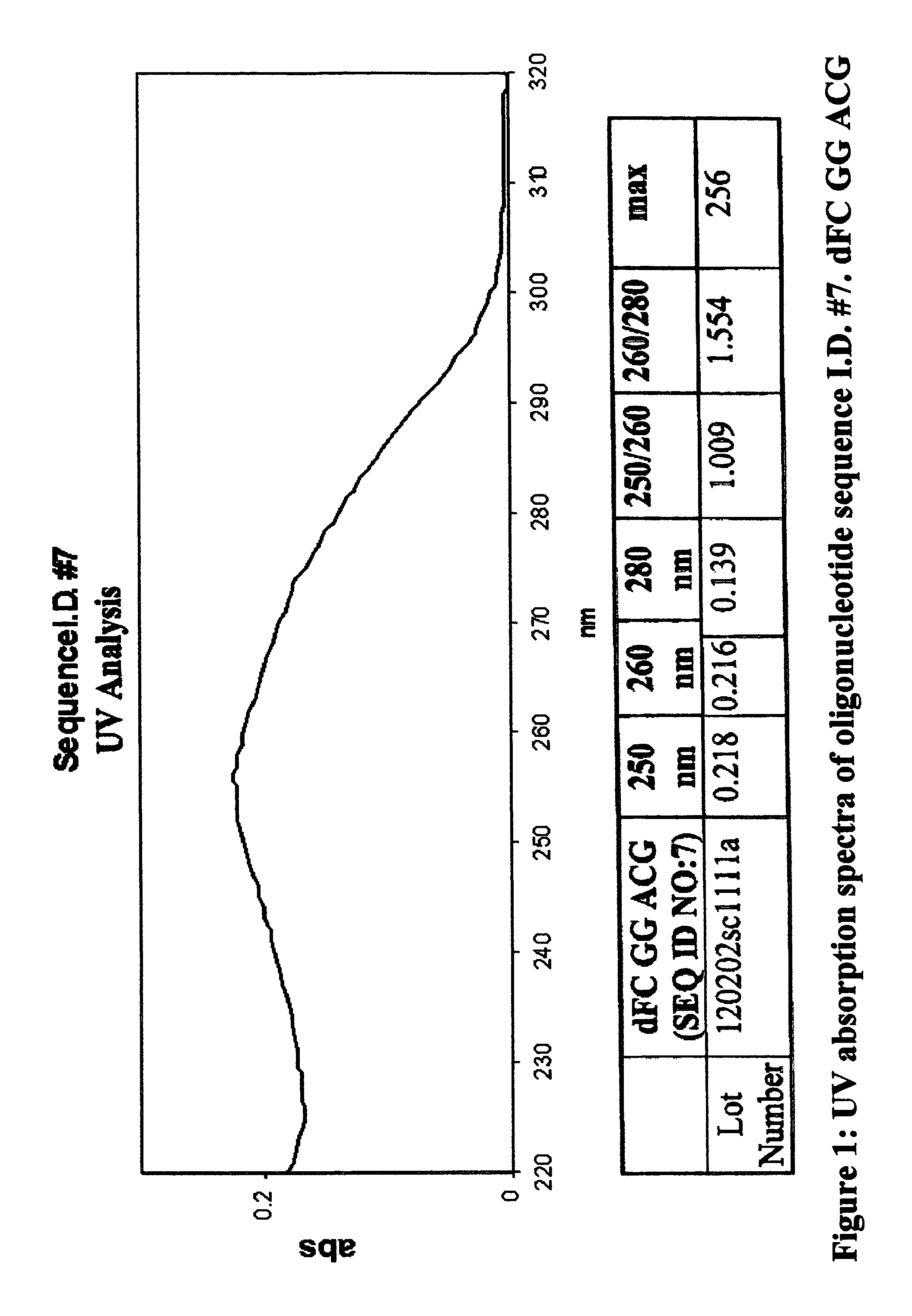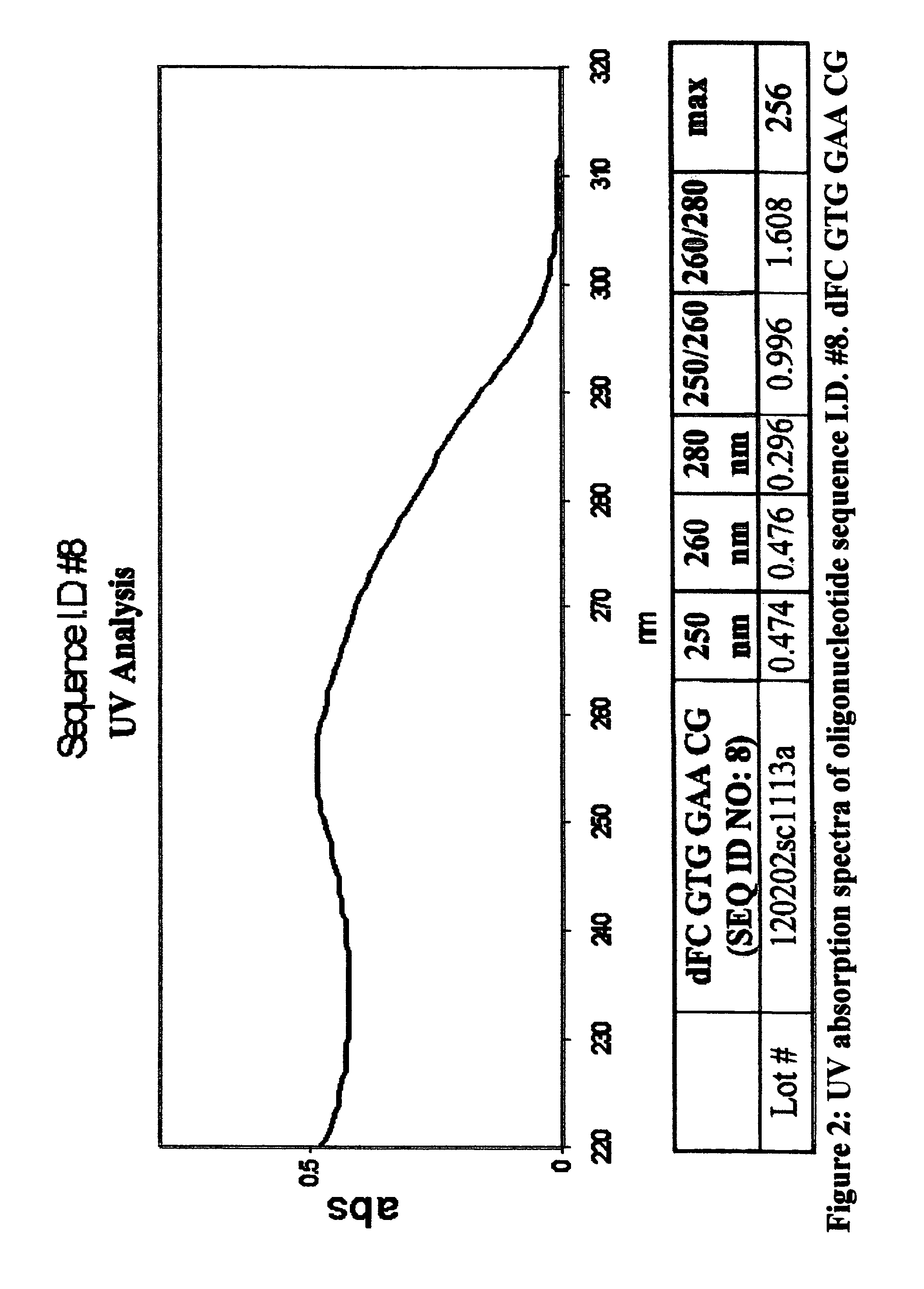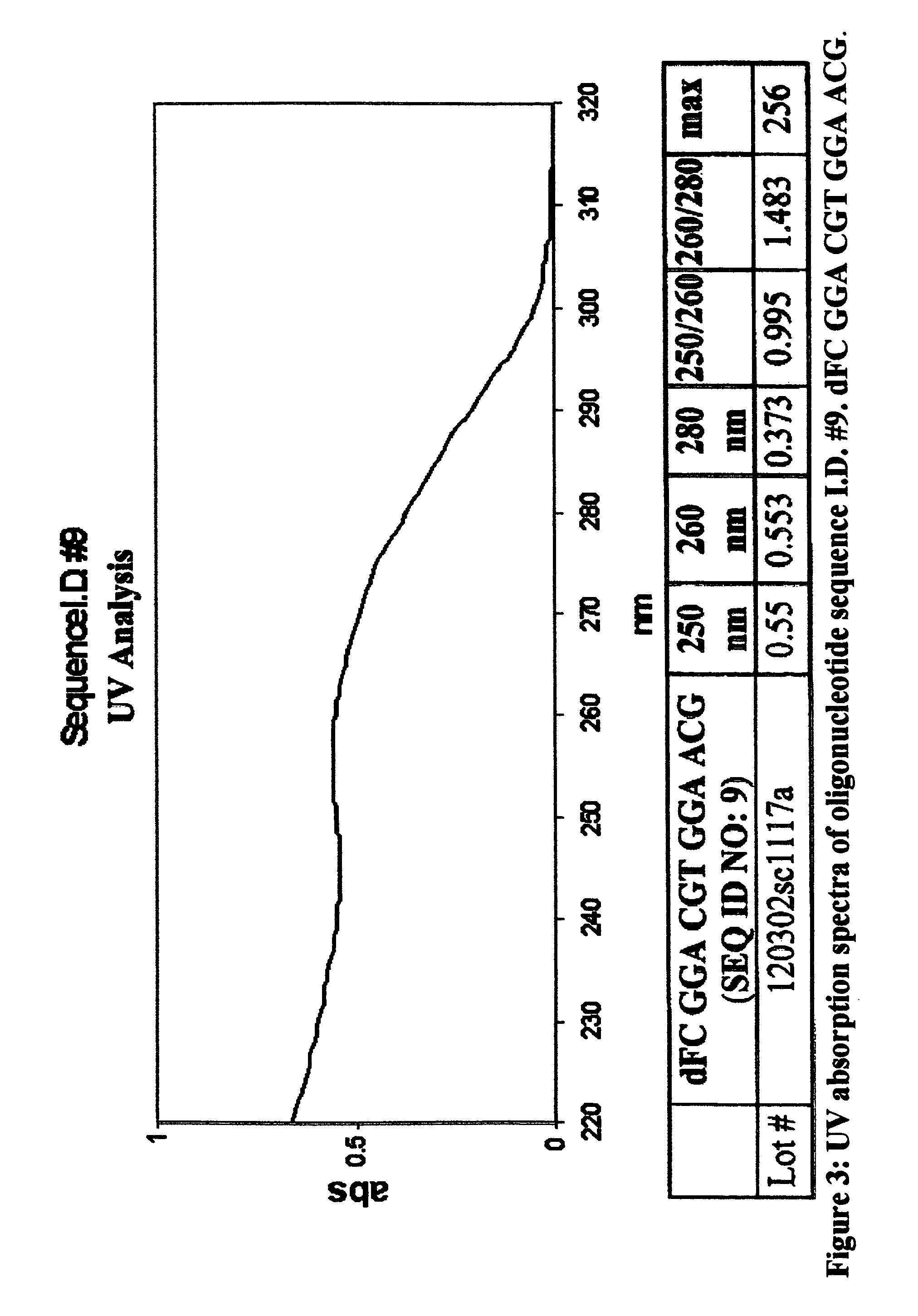Oligonucleotides and related compounds
a technology of oligonucleotides and related compounds, applied in the field of oligonucleotides, can solve the problems of non-specific cancer death, cell death, cell death, etc., and achieve the effects of enhancing immunostimulatory activity, preventing necrosis and apoptosis, and facilitating hydrolysis
- Summary
- Abstract
- Description
- Claims
- Application Information
AI Technical Summary
Benefits of technology
Problems solved by technology
Method used
Image
Examples
example i
Preparation of N-Benzoyl-2′-deoxy, 2′,2′-difluorocytidine (Compound II)
[0159]2′-deoxy, 2′,2′-difluorocytidine hydrochloride CAS#95058-81-4; GEMZAR) (Compound I; 2.0 gm), a product of Lilly France, S. A. Fegersheim, France, was dried by coevaporating it twice with 10 ml of dry pyridine. The compound was dissolved in 40 ml of dry distilled pyridine and 57.3 mmole (7.28 ml) of Trimethyl Chloro Silane was then added dropwise at 0° C. under Argon atmosphere. The reaction mixture was brought to 30° C. and was stirred for half an hour. It was then cooled to 0° C. and 10.1 mmole (1.18 ml) of Benzoyl Chloride was added dropwise under argon atmosphere and the mixture was stirred at 30° C. for 2.5 hours. Next, the reaction mixture was cooled to 0° C. and 10 ml of distilled water was added and the diluted mixture was stirred for 10 minutes to quench any excess Trimethyl Chloro Silane and Benzoyl Chloride. Afterwards, 14 ml of precooled ammonium hydroxide solution (28%) was added at 0° C. and st...
example ii
Preparation of 5′-O-DMT (N-Bz) 2′-deoxy, 2′,2′-difluorocytidine (Compound III)
[0160]The above compound II was taken (3.25 mmole) in dry pyridine and evaporated twice under high vacuum. The residue gum was taken in dry pyridine 12 ml and to the solution was added DMT-Cl (3.6 mmole) at 5° C. The reaction mixture was stirred for 4-5 hours at 5° C. The mixture was then quenched at 0° C. with 20% aqueous pyridine. The total mixture was dried under vacuum. The gum was extracted with chloroform washed with saturated aqueous sodium bicarbonate once, followed by saturated aqueous sodium chloride solution, and evaporation of the solvent on a rotary evaporator. The residue was purified on a silica gel column using chloroform and a gradient system consisting of 2-6% methanol in chloroform. The pure fractions were pooled and dried. The yield of pure compound was 85%. TLC Rf of the compound III, 0.50 in chloroform, hexane, acetone, methanol in a ratio of 50:28:20:2. HPLC analysis showed sharp sin...
example iii
Preparation of 5′-O-DMT (N-Bz)-2′-deoxy, 2′,2′-difluorocytidine-3′-Cyanoethylphosphoramidite (Compound IV)
[0162]Compound III (1.5 mmole) was thoroughly dried with dry acetonitrile and taken up in dry tetrahydrofuran. To the stirred solution was added N,N-diisopropyl ethylamine (3.75 mmole) under argon; the solution maintained at 5° C. N,N-diisopropylamino cyanoethyl phosphoramidic chloride (1.65 mmole) was added dropwise, followed by further reaction at 25° C. for one hour. The reaction mixture was diluted with ethylacetate and washed with saturated aqueous sodium bicarbonate once, followed by saturated sodium chloride once. The organic layer was dried over anhydrous sodium sulfate, followed by evaporation under vacuum. The residue was purified by column chromatography. The solvent system for column and TLC was ethylacetate, hexane and triethylamine in a ratio of 50:40:10. The TLC Rf of compound IV, 0.45 & 0.55. HPLC analysis showed sharp doublets, Rt, 3.85′& 4.45′ (system z). WV (m...
PUM
| Property | Measurement | Unit |
|---|---|---|
| wavelength | aaaaa | aaaaa |
| length | aaaaa | aaaaa |
| length | aaaaa | aaaaa |
Abstract
Description
Claims
Application Information
 Login to View More
Login to View More - R&D
- Intellectual Property
- Life Sciences
- Materials
- Tech Scout
- Unparalleled Data Quality
- Higher Quality Content
- 60% Fewer Hallucinations
Browse by: Latest US Patents, China's latest patents, Technical Efficacy Thesaurus, Application Domain, Technology Topic, Popular Technical Reports.
© 2025 PatSnap. All rights reserved.Legal|Privacy policy|Modern Slavery Act Transparency Statement|Sitemap|About US| Contact US: help@patsnap.com



